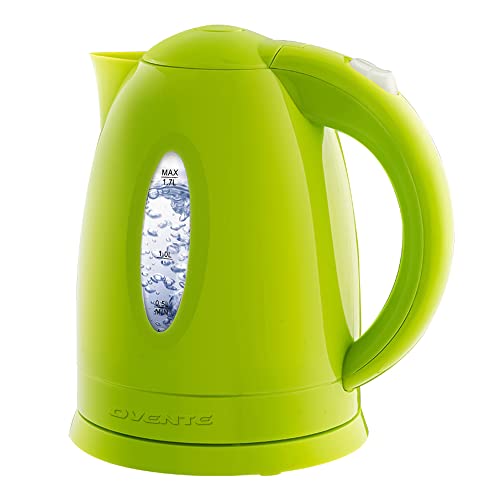51 Horse Grooming Tips
Grooming is the backbone of horsemanship and creating a relationship with your horse. It’s often challenging, with lovely hurdles like shedding, mud, and stains. Be prepared with some grooming secrets, and add sufficient elbow grease! You can always add to your horse grooming kit as needed. And behold – 51 horse grooming tips for you.
One purpose of grooming is to monitor your horse’s health and to transform the dirty horse into a shining star. During the grooming process, you replace a herdmate that would use mutual grooming to bond. Horses may not see us as other horses, but we can communicate much through touch.
Regular grooming will also encourage blood flow and bring up those natural oils. Elbow grease is a great way to add shine to your horse’s body!
Table of Contents

Horse Grooming Tips for Your Horse’s Skin
Sebum
- The production of natural oils for the skin, called sebum, happens in the sebaceous glands. These magic glands open into the hair follicle, coating every strand of hair with stain-repelling goodness. Sebum is also antimicrobial and part of your horse’s immune system.
- There are a few things you can do to boost the sebum. Stop using harsh detergents and shampoos. These strip oil! Help the sebum spread by currying your horse more than you think is necessary. Feeding the sebum from within with Omega 3 fatty acids and a well-balanced diet are top priorities.

Healthy skin starts on the inside. I like flax for Omega-3’s to boost skin and coat health.
Curry combs and such
- Try all the curry combs and brushes, and consider this a long experiment into what your horse likes! This is especially true for sensitive horses. Varying pressure and trying new grooming tools are the key to your horse’s happiness. Try grooming gloves, sheepskin mitts, cactus cloths, and every style of bristle and brush you can, especially for sensitive skin.
- Dandy brushes are multi-functional brushes and come in varying styles and densities. A soft body brush is often better for faces, butt cheeks, and other sensitive areas. Natural fibers like goat hair make dandy brushes softer, and many a horse prefers a soft brush.
More grooming tools
- With added stiffness and length, body brushes are best suited for breaking up mud and digging into a horse’s winter coat’s long hair. Some horses do appreciate the scratchiness of a stiff body brush! The stiff bristles are excellent at flicking away loose hair.
- A metal curry comb was once the gold standard for grooming a horse in winter and during shedding season. Grooming gloves are more versatile, won’t rust, and are safer for removing dead hair. Some horses will be fine with this curry comb style over larger body areas. Please don’t use them on hips, shoulders, legs, faces, or sensitive areas.
Don’t share your horse’s grooming tools
- There’s no faster way to spread bacterial infections like rain rot and fungal infections like ringworm than shared horse equipment. Sharing brushes, saddle pads, and tack also means you will wash them more often!
Sunscreen
- Using zinc oxide-based sunscreen has many benefits for your horse! It protects pink-skinned noses, and bugs won’t be able to bite. Zinc oxide is also lovely for any minor nicks or cuts your horse may get in summer.
Keep mud away
- Mud is, by far, the bane of most equestrian’s existence. Attack it from all angles – paddock management, horse care, and finger crossing. Many feathered horse owners use copious amounts of grooming oil in the feathers and tail to ward off the mud. Fly boots are also acceptable in winter; this will give your horse a bit of a barrier to loads of wet Earth attaching itself. Sox for Horses is another excellent idea, especially if your horse has equine pastern dermatitis.
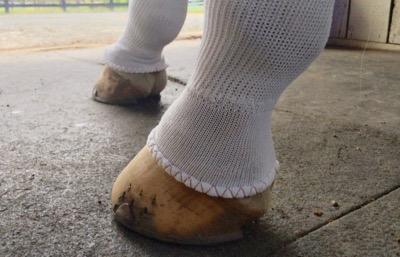
Horse socks work to help control and prevent mud fever.
Feed the skin
- Creating the best diet for your horse is challenging – there are endless factors to consider – and one big one is adding Omega-3’s to your horse’s coat. Also, consulting an equine nutritionist with a Ph.D. is more affordable than a few new saddle pads. I trust www.summit-equine.com

Your Horse’s Coat
- That awesome sebum creates shine and waterproofing to ward off rain and snow. For horses that are hard keepers or have insufficient coats and waterproofing, use blankets.
Egg counts
- Intestinal parasites create dull coats. Fecal egg counts monitor levels of some worms, specifically ascarids. Use a fecal egg count in the spring and fall as a starting point for a targeted deworming plan with your vet’s help. Rotational deworming programs can lead to drug resistance in the worms, and then we are really in trouble.
Spot removers
- No-rinse shampoos and spot removers allow you to clean your horse without a full bath. Prevent stripping that sebum if you can! Spot-remover will help lift the dirt and boost shine when adding a few glugs to your hot water during hot toweling in the winter.
Clipping
- A horse’s thick winter coat is beautiful for your horse unless it’s inappropriate for the climate, their skin health, and the amount of sweating they’re doing. Keeping your horse comfortable in winter often means trace clipping or body clipping. A clipped horse can thermoregulate better, dry faster, and have a smaller chance of developing mystery skin funk.
Static
- Static shocks are just plain annoying! Cut the static by spraying your grooming tools with a sheen spray, no-rinse shampoo, or plain water as you groom. There’s no need to get anything wet. A small spritz will do just fine. Repeat as you are grooming.
Oil buff
- Oil buffing is a super easy workout that involves massaging or brushing grooming oil into your horse’s coat to condition and shine it.
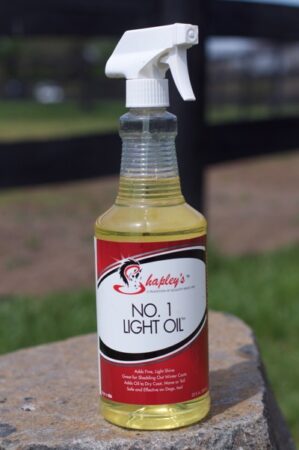
Horse Grooming Tips for the Shedding Cycles
Sand
- Let your horse’s body do some work the next time they shed. An excellent roll in the sandiest area of your farm should do the trick! This trick is one of the horse grooming tips that doesn’t save you time – as you will still need to groom out that sand.
Curry and oils
- Grooming oils can help with the shedding season, too. After grooming, add some grooming oil to a cloth or mitt and wipe your horse. You will deposit conditioning shine and help some hair find its way to the fabric, not your chapstick.
- Baby oil shares some of the same ingredients as grooming oils for horses if you would like to try that.

Quarter cracks can cause lameness.
Horse Hoof Care
Sprinkle picks
- Sprinkle hoof picks all over the farm and barn. Hang hoof picks near gates, stall doors, grooming areas, in the farrier’s area, and anywhere you might be moving your horse in or out. Hooves can pick up rocks, nails, twigs, and mud. Pick your horse’s feet before you move your horse!
Coronary bands
- Quarter cracks start at the coronary band and travel downwards. They are painful and need help from the vet and farrier to heal. Most are conformation issues that do well with corrective farrier work. You can sometimes see subtle changes to the coronary band before a quarter crack busts open. The ideal time to stop a crack is when you start to see tiny signs of injury.
Jet setting
- You can put all the thrush medication into a hoof you like, but the foot needs to be clean to work! Hose nozzles with a “jet” setting are perfect for blasting out every last bit of dirt from the grooves. Pat dry with a towel and apply meds before moving your horse.
Olive oil
- Your horse’s hoof dressing doesn’t have to be expensive; you can use olive oil. Use caution in warmer months, as it may attract flies. But really, everything does. You may have heard that olive oil is a good tail detangler, but it just gets gross. Stick to a grooming oil instead for the mane and tail.
Horse Grooming Secrets for Legs
Trim leg hair
- You don’t need to clip to the skin. Removing the bulk of hair gives mud less hair to attach itself to. Any wetness and dirt will also dry faster, and it’s easier to feel for skin infections. Incidentally, mud causes some of those skin infections.
Chestnuts and ergots
- Softening chestnuts and ergots for peeling or trimming is best. During a bath, peeling them is good, or put petroleum jelly on them for a few days to soften them. Peel them away, and don’t twist them off! Or, leave them alone.
Ice boots
- When leg emergencies happen, and they do, ice can help your horse fight off pain and inflammation. If you don’t have technical ice boots for your horse, fly boots will do. The Shoo Fly style is particularly tough and forms a cone around your horse’s leg. Fill it with ice cubes. As the cubes melt, the water will drain from the bottom.
Wet legs
- If you have traditional ice boots for horses, starting with a wet leg will help things cool off. I would skip this in the winter or cold weather. For gel packs, this is quite helpful as the packs warm up quickly.

Faces
UV light
- Fly masks are for more than flies. They can help block UV light and keep gnats away. Bugs can spread infections, like aural plaques, and create allergic reactions, as with sweet itch. And they are just a nuisance!
Vibrissae
- These long buggery hairs, called vibrissae, help your horse know where their eye is in relation to things like walls and other bonkable objects. Sometimes, those hairs can grow long and loop back, pointing at the eye. I will trim those to avoid eye stabbings, but I won’t cut them down flush.
Keep the whiskers
- Whiskers are another vibrissae, helping your horse feel around, as their eyes can’t see under there. The best horse grooming tip is to leave whiskers alone. Many national and international horse show organizations, and some countries, forbid clipping whiskers for competitors now.

Your Horse’s Mane
Roaching
- Streamline your grooming routine with a roached mane! Roaching, or hogging a mane, has many benefits, not the least of which is stopping a super thick mane from sweating up a horse’s neck. Bugs and ticks are easy to spot and remove, sweet itch topical meds are a snap to apply, your horse’s bridle will fit better, it’s easier to see your horse fill up the outside rein, and it’s darn cute.
Braids
- On the other hand, if you are taming your horse’s mane or growing it out, consider long and loose braids. Braids are an excellent way to keep tangles away and help things stay on one side. Tight braids can irritate a horse and inspire them to rub their mane.
Bridle paths
- There’s no better way to ensure proper bridle fit than with a clipped bridle path. Manes create a lump under the crownpiece of your bridle. The tack won’t fit smoothly over the poll, and the lump places uneven pressure on your horse’s cute noggin.
Horse grooming tips for manes
- Several tools can create an even mane. Use scissors, a mane blade, or an old clipper blade to shorten the mane. For creating consistent thickness throughout the mane, use a solo comb. Then your braids will be perfect! Always use combs and brushes with wide teeth. Many human hairbrushes work well.
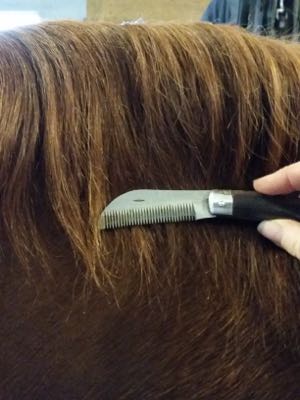
These mane blades create a nice edge on a mane.
Tails
Daily care
- It doesn’t matter if you prefer to pick your horse’s tail by hand or if you want to use tail brushes. Small tangles and bits of bedding are easier to deal with in small batches. Daily attention also reminds you to inspect your horse’s cute hind end and tailbone daily.
Detanglers
- Slick tails serve two primary purposes: keeping knots away and creating a barrier to stains. Unconditioned hair is brittle, and tangled hair is brittle. Dry and cracked hair gives mud, manure, and urine stains an engraved invite to invade your horse’s tail. Use grooming oil to deep condition and detangle the tail.
Winter horse grooming tips
- A well-placed mud knot can keep the bulk of mud and moisture out of your horse’s tail during cruddy weather. It doesn’t have to be perfect, but it does need to be below the tailbone. If your horse’s tail is slick, you can secure it with some vet wrap.

Tail bags
- Tail bags are a grooming tool that I might use in the winter. Horses need their tails in summer for fly protection, so I prefer to let them fly loose when the bugs are out. For mare owners, make sure your horse’s tail bag is out of the urine stream.
Bathing Your Horse
No buckets
- After wetting your horse, dollop some shampoo right onto your grooming glove. Pat your horse over their body, then curry the shampoo into their coat. There is no need for buckets or sponges.
Sweat scrape
- Save a little water by scraping off most of the shampoo before you rinse. This is especially helpful if you are running low on warm water! It’s also quite satisfying to flick big gobs of bubbles around.
White vinegar
- Shampoos and coat conditioners can be challenging to rinse thoroughly. As a final rinse, white vinegar removes any residue. Horses with itchy tails will appreciate this, and the vinegar helps to brighten white and gray horses.
Hot toweling
- A bucket of hot water, some washcloths, and no-rinse shampoo make for a great hot toweling session. This method of horse grooming uses steamy towels to lift dirt and funk from your horse’s coat. Your horse should not get wet, and you can use coolers to cover up any damp areas. This is a great workout that looks like a grooming session!
Learn how to hot towel your horse here.
Hot water kettles
- Use a bit of hot water while grooming for a real treat. Hot water is ideal for warming bits, hot toweling small areas, and adding to your horse’s feed. Instant kettles make this easy in your daily grooming routine.

A hot water kettle is clutch for winter grooming
Clipping tips
Use grooming oils
- Grooming oils do a few things. Rub a tiny amount of grooming oil into their coat after grooming and bathing your horse for clipping. A soft sponge is perfect for this. The oil allows the clippers to zip through the hair if the blades are sharp. After clipping, buff some grooming oil on your horse for a shiny coat.
Dirty floor
- If it’s breezy when you are clipping, sprinkle a bit of dirt or shavings on the fallen hair to prevent it from flying away. Shavings and dirt on the floor add some grip, and hair is more likely to stay put. It’s also much easier to sweep up the hair and dirt mixture.
Recycle blades
- Don’t toss out old clipper blades! Use them to shorten the mane. Grab a small section of mane, about an inch wide. Backcomb or rat-up the hair and lob off the ends, trimming the mane. The hair will have a natural finish.
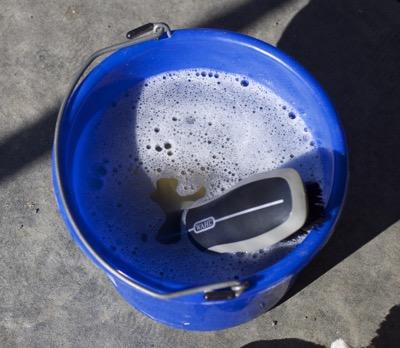
Horse Grooming Tips for Horse Show Day
Wipes
- Homemade grooming wipes are easy! Add some shop towels to a baggie or small container. Shop towels are heftier and larger than baby wipes. Pour in a bit of your no-rinse shampoo and water, and stir! It’s okay if you add too much liquid. Wring out the towel before use, and then wipe the stains away. Wipes are excellent when you don’t have enough time for a trip to the wash rack.
Feed bags
- Empty feed bags make great trash cans for narrow spaces at showgrounds. You can also cut up a feed bag as a wrap and boot holder at the show.
Use wheels
- While traditional tack boxes are gorgeous, they are cumbersome at best for horse shows. Hit the hardware store and pick up a durable rolling trunk. The handle is retractable!

WHEELS!
Powders
- Sprinkling cornstarch or baby powder on white hair brightens it up for the show ring. To avoid covering hooves or dark hair, drape a washcloth over those areas. You might end up with paste if the showgrounds are wet or muddy.
Sprays
- An alternative to powders to whiten legs is Show Touch Up. These colored sprays are pigments in a can and take days to wear off. Apply similarly to baby powder, using a cloth to cover areas you don’t want sprayed.
Go here for the ultimate horse show packing list
Click here for show and competition horse grooming tips
Tack Care
Condition
- Oiling your leather too frequently results in worn-out stitching! It’s better to clean and condition your tack daily. A good oil the first time you clean your new saddle is best, otherwise stick to conditioners. Neatsfoot oil can also become rancid, blech.
Breakaway crowns
- Any halter on your horse’s noggin should have a safety feature to break away. The most logical way is a leather crown piece. You do not have to have a leather halter; leather crown pieces are available separately to make any nylon halter safer.
Dishwasher
- The dishwasher can also clean SOME nylon halters, spurs, stirrups, and some bits. Using metal polish on your tack’s shiny things is also lovely. You can also pick up polishing cloths to make it easy, but these wipes are not for bits.
Barn Management
Brushes
- Forget about using a separate bucket to wash your horse brushes. Keep your tools and brushes in your tote or grooming kit, and wash them all simultaneously. Brushes, especially softer bristles, should dry on their sides to preserve the bristles.
Extra stiff brushes
- Use stiff brushes to clean work boots, the bottom of your pants, mud from hooves, mystery crud from horse blankets, and anything else that needs a touch-up. Don’t use this brush on your horse, though, it can be your designated gross stuff brush.
Drill brush attachments
- Nothing says efficiency more than letting a power tool do the work for you. You can find brushes that attach right to your drill so they spin and clean. These handy drill attachments also save time.
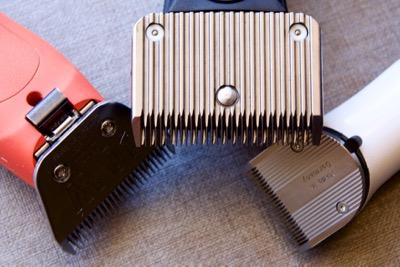
FAQ and more horse grooming tips
Should you groom every day?
- Yes! Your horse’s health is the primary reason for grooming, and daily checking allows you to catch medical issues quickly. Use all the horse grooming tips and do health checks.
- Grooming more than once a day is often necessary, as many horses come back from exercise sweaty and dirty. The priority is to ensure your horse’s sweat isn’t interfering with their body temperature. In hot weather, sweat should be cooling them off. In colder weather, they may cool off too quickly when sweaty, so use coolers.
- Curry combs are great for cleaning and massaging your horse. The more, the merrier.
How long does it take to groom a horse?
- In a perfect situation, you find your horse clean and sleek. In that case, grooming should take you 20 minutes. Mud, caked-on dirt, a winter hair coat, or stains will add time to this process!
- Over time, you will streamline the grooming process for your horse, and things will go smoothly, even more so with your horse grooming tips that you figure out.
Happy grooming, and let me know what other horse care secrets you have.
Go Shopping
Stock up here for your horse supplies! As an Amazon Associate, I earn from qualifying purchases, but it’s ZERO extra cents to you. As a Walmart Associate, I earn from qualifying purchases as part of their affiliate plan. I appreciate your support! You can also visit my Amazon storefront here: PEG storefront.
Omega 3's plus gut health support in a delicious cold milled flax formula. It's delicious and it will turn your horse's coat into a mirror.
These are HandsOn Gloves with special pricing! Only in the color gray.
Gentle and effective detangling for your horse's mane and tail.
Spot removing, deodorizing, dust busting, shine adding spray.
This is my favorite horse care product for shine, conditioning, detangling, and stain protection.
This is my favorite clipper - It's great for body clipping, trace clipping, and trimming. Cordless for the win!
These fly masks are fantastic for protecting ears and eyes, and do great under halters and grazing muzzles to stop rubs and hairless patches.
Use code 15PROEQUINE for a sitewide discount on muzzles, halters, accessories, and slow feeders.
This waterproof tail bag is especially great for white and gray tails.




















